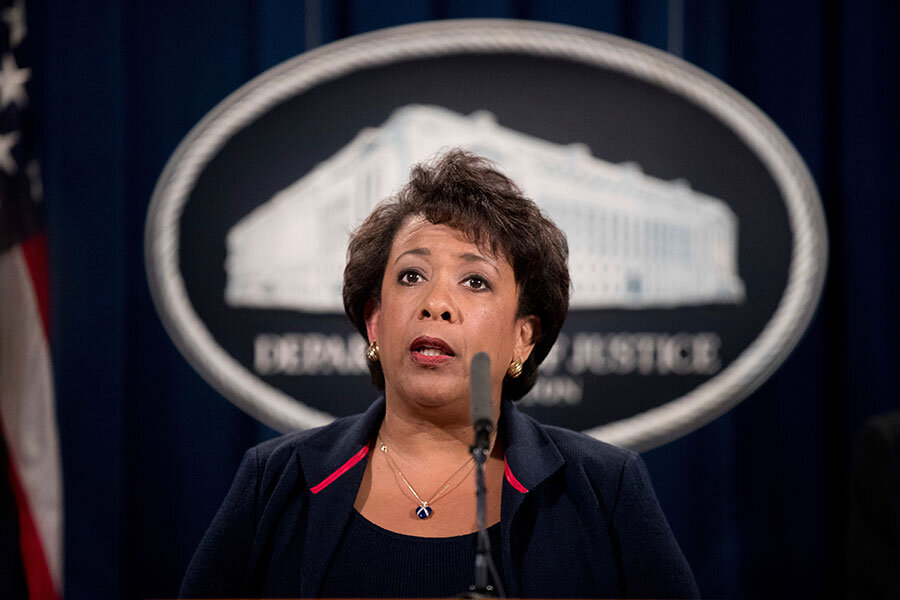To address police shootings, DOJ aims to quantify use of force
Loading...
Knowing how and when police use force against civilians will go a long way toward addressing the problem, the US Justice Department says.
On Thursday, Attorney General Loretta Lynch announced a pilot program to gather more complete use-of-force data. Currently, federal law only mandates that police report interactions in which individuals die. The new program would expand this to include injuries, firearm discharges, and other uses of force.
The decision comes following a series of high-profile cases in which black men died at the hands of police officers, sparking community outrage and protests and reinforcing a sense of mistrust of police in black communities. Though the plan may not be universally popular, Ms. Lynch and Federal Bureau of Investigation Director James Comey hope that more complete data will help improve relations and provide a way forward.
“Accurate and comprehensive data on the use of force by law enforcement is essential to an informed and productive discussion about community-police relations,” Lynch said in a statement on Thursday. “The initiatives we are announcing today are vital efforts toward increasing transparency and building trust.”
The kind of transparency a force-tracking program offers would be welcomed by communities, who have repeatedly called for more information about police action to be made public.
“Lawmakers have to force police departments to adopt a culture of transparency where a range of data including the use of force, traffic stops and complaints are made public,” wrote Walter Katz, a member of the National Association for Civilian Oversight of Law Enforcement, in an op-ed piece in The New York Times last year.
Without this data, “we’re driven entirely by anecdote, and that’s a very bad place to be,” Mr. Comey said during a congressional oversight hearing last month. The information would help the government know where to start in addressing the problem, he suggested in a speech at Georgetown University last year.
“Not long after riots broke out in Ferguson ... I asked my staff to tell me how many people shot by police were African-American in this country. I wanted to see trends. I wanted to see information. They couldn’t give it to me, and it wasn’t their fault.”
But it may be hard to get police departments on board. “There’s resistance to reporting use-of-force incidents – which of course could trigger an FBI civil rights investigation, for example,” Thomas Larned, a former high-ranking FBI official and now a partner at the law firm Roetzel & Andress, told The Christian Science Monitor last year. Only about 10,000 of the nation’s 18,000 law enforcement agencies were reporting even summary data about the use of force in 2015, Stephen Morris, assistant director of the FBI’s Criminal Justice Information Services division, told USA Today last year. Not among them: major police departments like New York, Chicago, and Philadelphia.
Independent efforts to provide data have included the website Fatal Encounters and a database managed by The Washington Post.
The federal pilot program, expected to begin in 2017, will involve the largest law enforcement agencies and major federal agencies, including the FBI, Drug Enforcement Administration, and the Bureau of Alcohol, Tobacco, Firearms and Explosives. Federal officials say local agencies have already been cooperating with requests to report non-deadly encounters, which remains voluntary.
The Justice Department is currently taking public comments to try to make the process simpler for police officers and the information more valuable to communities.
Ultimately, the success of the program may hinge on making it financially viable for police departments.
“At some point, making improvements or enhancements to data systems is going to cost something to someone somewhere, and that alone can cause some agencies to say, ‘No way, not unless you’re paying for it, Uncle Sam,’ ” Frank Scafidi, who spent 20 years in the FBI and is now the director of public affairs for the National Insurance Crime Bureau, told the Monitor last year.
Material from the Associated Press was used in this report.








